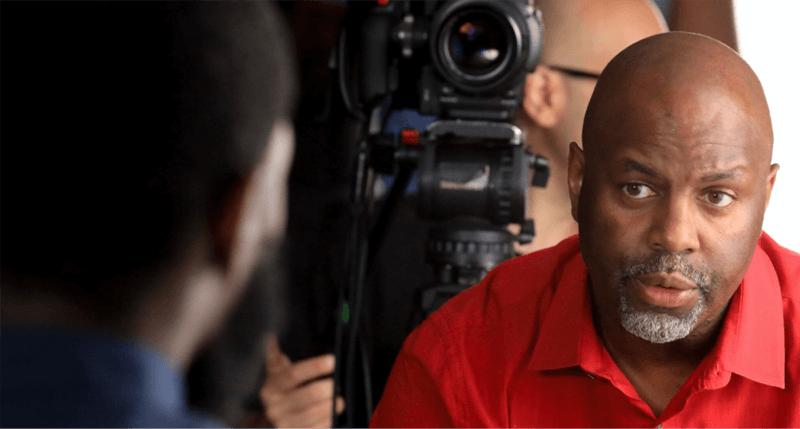As he talks about hazing, Byron Hurt (shown here) is left with tough questions:
Why did he hit people? Why did he let people hit him?
“There was a real strong connection between the culture of masculinity and the … violence we see in hazing culture,” he said.
Now he’s directed “Hazing,” which airs at 10 p.m. Monday (Sept. 12) on PBS. The documentary includes two men who were deeply impressed by football and by family heroes:
— Hurt himself. He was the starting quarterback at Northeastern University and an uncle was his hero. “He was a scientist,” Hurt told the Television Critics Association. “He was somebody who I had great respect for, but I also saw him as a really tough man. He was a really strong man.”
— Brent McClanahan II, who was always impressed by his father. “He was a man’s man,” he recalled.
The dad spent seven years with the Minnesota Vikings, five as a reserve running back and two as the starting fullback. During those two seasons he protected a scrambling Fran Tarkenton, ran for 706 years, caught 74 passes and scored eight touchdowns. Afterward, he became a high school computer teacher in Bakersfield, Cal., named the NFL Teacher of the Year.
“My father was a Kappa (Alpha Psi),” McClanahan II said. “I internalized (that) and I stuck with that.”
There were rough times first. The son dropped high school football after an injury and drifted in life. “I went through homelessness,” he said, in a phone interview after the TCA session, “I had lost my kids.”
At 24, he was finally ready to turn his life around, attending California State University – Bakersfield, where the dormant Kappa fraternity was being revived. “I was going to get my life back.”
But the hazing, he said, involved canes, whips and paddles. The latter was supposed to be on the buttocks; instead, a hard blow hit him on the site of previous back surgery.
That night, at his parents’ house, he suddenly fell. “After I collapsed, I was paralyzed …. My parents called the authorities.”
Three men were convicted of misdemeanors. More than a decade later, McClanahan is 36, married, walking and in a new life. “I settled out of court; I was able to buy a nice home …. I feel a lot freer that I was back then. I’ve come through my trauma (and) I’m at a better place.”
But he and others pose questions about why people submit to – and commit – hazing.
“I was entering young adulthood, young manhood,” Hurt said. “I really wanted to test my own mettle.”
He holds no grudges against the people who hazed him, he said. “I don’t really blame myself for being a hazer. What I blame is the culture of masculinity that many of us just buy into without questioning.”
Hazing is most extreme at historically Black fraternities, he said. (That includes his own fraternity and McClanahan’s.) But it has lingered everywhere – whites, bands, sports teams, sororities.
Patricia Strong-Fargas talked about her daughter, Kristin High, who was joining her aunt’s sorority.
The hazing was grueling, Strong-Fargas said. “She called me to her bedroom and said, ‘Mom, this process is hard. But you know what? When this is over, I’m going to make some major changes.’”
That night, she was allegedly told to walk blindfolded and backward into the Pacific Ocean. She drowned.
